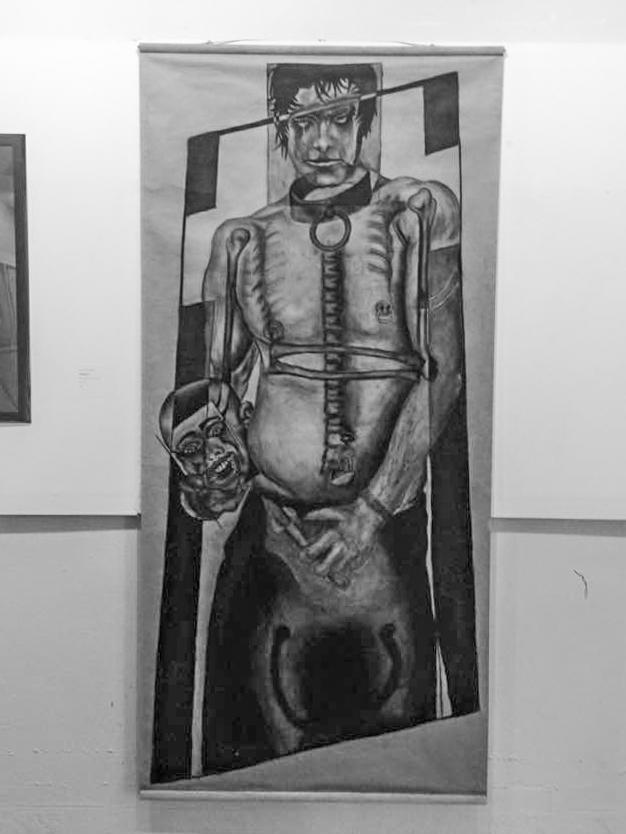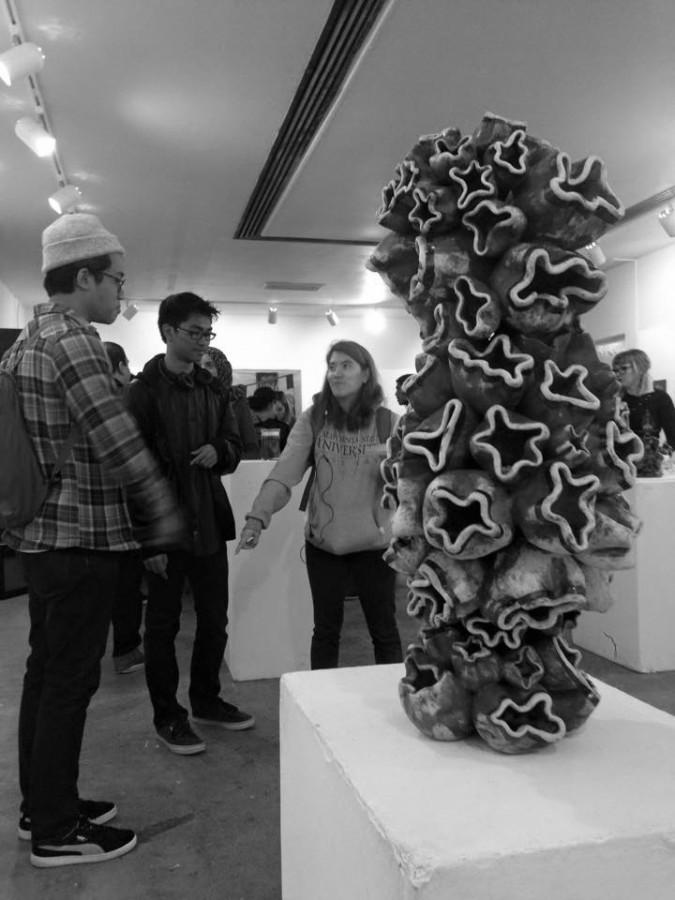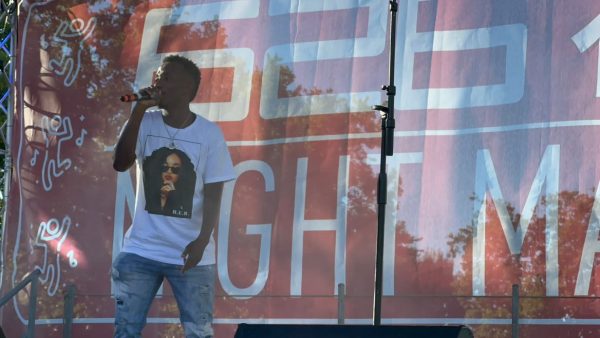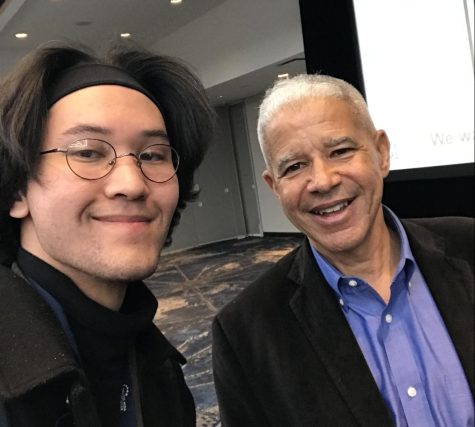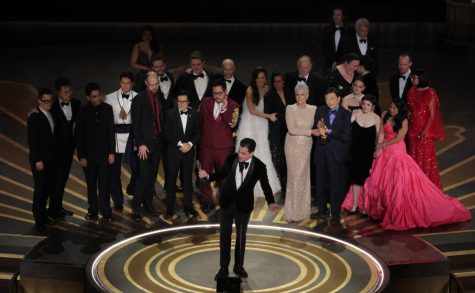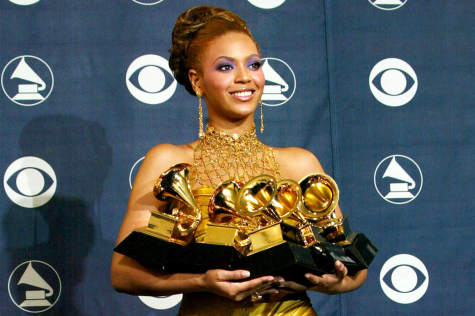Art students depict the human body
Artwork by students is on display in the Art & Education building for the opening reception on Feb. 19.
February 26, 2015
An exhibit from last weekend on Cal State University, East Bay’s campus features artwork from twenty different CSUEB art students showing their abstract perspectives of the human body.
The series, titled “Senior Capstone Series,” is comprised of three classes: Senior Thesis, Senior Seminar and Senior Portfolio. Each class is meant to prepare students for their thesis and what comes next as they enter professional creative fields.
The theme of the exhibit, titled [UN]human, was chosen by first-year art teacher Dana Hemenway. The display was held in the Arts and Education building in the Old Kiln Room.
“When putting together the show, I was looking at everyone’s work and I found that there was a common thread that went through a number of people’s pieces that dealt with looking at the human form in a fragmented way,” said Hemenway. “But sometimes it blended itself to thinking about other natural forms like maybe an animal or some other element of nature. That’s why the title has that play. It’s not just strictly unhuman. It’s [UN]human. It can be one or the other or a combination of both.”
Hemenway teaches senior seminars for art students where they exhibit their artwork, design their portfolios, and develop communication skills in order to present their work.
She graduated from the University of California, Santa Cruz and has a Masters in Studio Art from Oakland’s liberal arts college, Mills College. While she attended school, she worked in numerous nonprofit organizations including ZERO1, Root Division, and the San Francisco Arts Task Force where she curated and organized shows, gaining her a total of ten years of experience.
She has managed San Francisco’s Art Commission Gallery and coordinated the annual catalogue for the nonprofit organization ZERO1, which ties in artistic minds and innovative ideas shaping creative ideas for the future.
“I gave them the theme but for the most part, I wanted them to have the freedom to make something new or to choose something from their collection that they felt fit the theme,” she continued. “What I really like about this display was the fact that students got to experience this first hand, not just being lectured on how a gallery works, but the hands on experience and seeing them succeed.”
Mauricio Itaguassu, who transferred from Diablo Valley College, explored the theme through several pieces.
“In the beginning, I was thinking about doing art to please people. I shifted to something different that’s more personal and healing, that fits who I am,” Itaguassu said. “I detached myself and let the art breathe and it just happened and when I saw it, it was like I was more of a viewer than the artist.”
Itaguassu featured four of his pieces in the exhibition. One of his pieces was a mixture of media where he used paint, cardboard, egg shells, newspaper, and other various items. This piece displays his idea of what goes on in human nature and captured the attention of junior Christa Padugar.
“I loved how it was so abstract and made you think outside of the box. Mauricio’s piece was made with a lot of things not just canvas and paint. I think there were eggshells in there and pieces of newspaper. I just loved it,” Padugar said.
Celeste Burcham has a few ceramic pieces and a drawing featuring a fairy tale element with a tiger and a heroine in a forest.
“Everyone in this show is phenomenally different in their styles but each of them has an amazing approach. It’s a learning experience. It’s a compilation of growth. We’re all learning from each other and balancing ideas off each other. It’s incredibly inspiring,” Burcham said.
The exhibition was on display for a week and amazed many viewers with the artwork, including an outline of a human body on the floor.
“We had to create something that was alive and the exhibition was an interaction. Life fades,” Itaguassu said. “We can’t reject that.”




